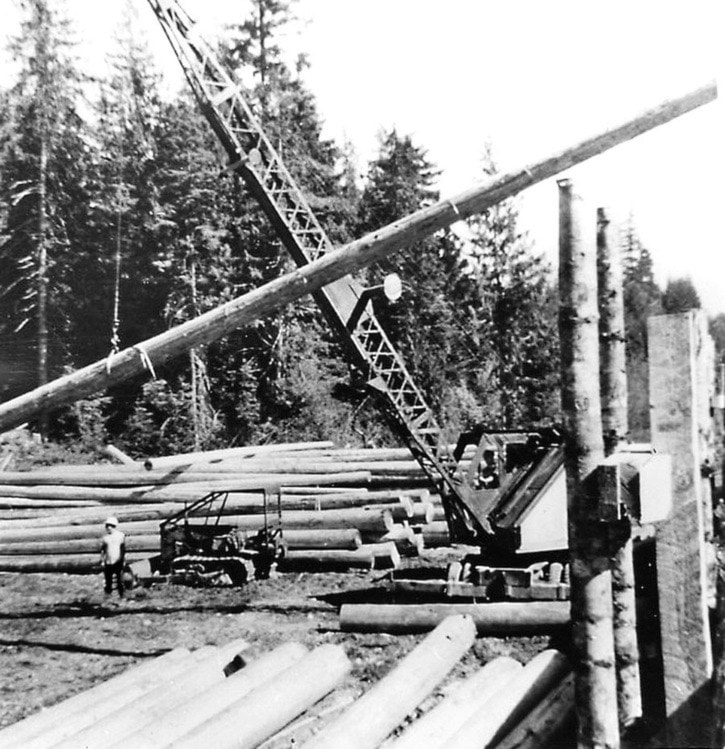While we generally associate Leechtown with gold, its history is varied, and includes talc mining, logging, sawmilling and pole cutting. This photo, early 1960s, shows the pole cutting operation of Bob Hughes.
Poles were generally taken from a forest before the felling of the larger trees. Tall and slender, the cedar poles were felled, limbed and barked, and were destined for use as communications poles, ie hydro and telephone. While there have been a number of pole cutting operations in our area, some of the better known names were Alec Manzer, Eric Bernard, Alf Brown, Ted Shaw and Bob Hughes.
While Bob Hughes had a CNR siding at Leechtown and at Woodlands Road and at the north end of Parkland Road in Saseenos, the scene shown here was a few miles past Leechtown near Sooke Lake. The figure standing by the Caterpillar tractor is Dave Reid. Dangling in the foreground is a cedar pole, being maneuvered into place on the flat deck rail car by a mobile loader.
Sooke’s Gerry Davies worked a dozen years at this site, and recalls that it was Ken Shepherd who trained him in running the loader and also driving truck. Gerry recalls that among crew members he worked at Leechtown with, besides Ken Shepherd and Dave Reid, were Irving Perry, John Davis, Bill Locke, Doug Slater, Walter Meredith, Bill Burns and Bob Doyer.
Generally, when the poles were loaded onto the flat decks of the Canadian National Railway, they were hauled to Victoria, where they were trans-shipped to Minneapolis for distribution to international markets as communications poles. Because this operation took place in the 1960s, the old steam locomotives which were noted for their haunting wail, had been replaced then by diesel locomotives which had no charm, merely emitting a stentorian blast.
If we went back even further to the 1930s in pole cutting, we could look at the Polemaker’s Shack at the museum, which shows an actual working shack in two compartments, one room for the polemaker, and one room for his horse.
Elida Peers,
Historian
Sooke Region Museum
